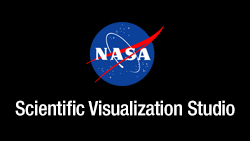Visualizations
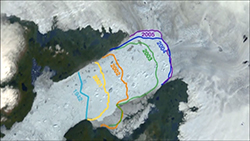
|
The winning video for the Aqua portion of the 2014 NASA REEL Science Communication Contest, by Lena Korkeila of El Dorado High School in Placerville, California. |
|

|
The winning video for the Aqua portion of the 2013 NASA REEL Science Communication Contest, by Will Reiss and Erik Borchers at Cardinal Gibbons High School, Raleigh, N.C.
|
|
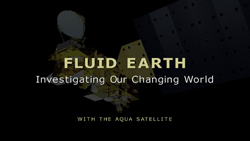
|
This 18 minute feature begins with an overview of the mission and then highlights seven significant science accomplishments, spanning contributions from all four Aqua instrument science teams. |
|
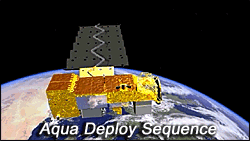
|
Shortly after achieving orbit, Aqua deployed its solar array, x-band antenna, and instruments. This time-accelerated sequence shows the following deployments: solar array, AMSR-E antenna, CERES aft, CERES fore, X-Band antenna, MODIS Earth shield, and AIRS Earth shield.
|
|
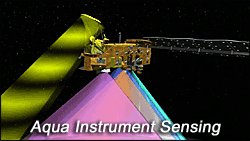
|
This animation shows schematically the sensing of Aqua's six Earth-observing instruments, in the following order: CERES, AIRS, AMSU, HSB, MODIS, and AMSR-E.
|
|
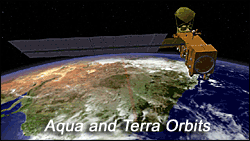
|
Aqua's early afternoon observation time complements the 10:30-10:45 a.m. equatorial crossing time (descending in this case) of the EOS Terra satellite, launched in December 1999. The two daytime crossing times account for why the Terra and Aqua satellites were originally named "EOS AM" and "EOS PM", respectively. The combination of morning and afternoon observations allows studies concerning the diurnal variability of many Earth system parameters.
|
|
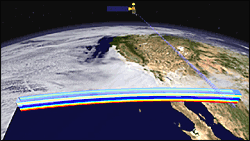
|
The AIRS on Aqua is the first AIRS instrument and a major advance over earlier sounders flow in space. AIRS measures atmospheric temperatures, humidities, and a host of other products, in order to improve weather forecasting and the understanding of climate processes. This artist's concept animation shows the AIRS instrument measuring air temperatures at five levels in the atmosphere, each level indicated by a separate color. |
|

|
On Aqua, AMSU is integrally coupled with the AIRS instrument. Since 1998, AMSU instruments have also flown on satellites of the National Oceanic and Atmospheric Administration. This artist concept animation shows the AMSU instrument measuring air temperatures at five levels in the atmosphere, each level indicated by a separate color. |
|

|
There are two CERES instruments on Aqua, following two on the Terra satellite, launched in 1999, and one on the Tropical Rainfall Measuring Mission, launched in 1997. This artist's concept animation shows the CERES instruments (one in cross-track scan mode, the other in biaxial scan mode) measuring heat emitted (outgoing longwave radiation) to space from Earth's surface. |

